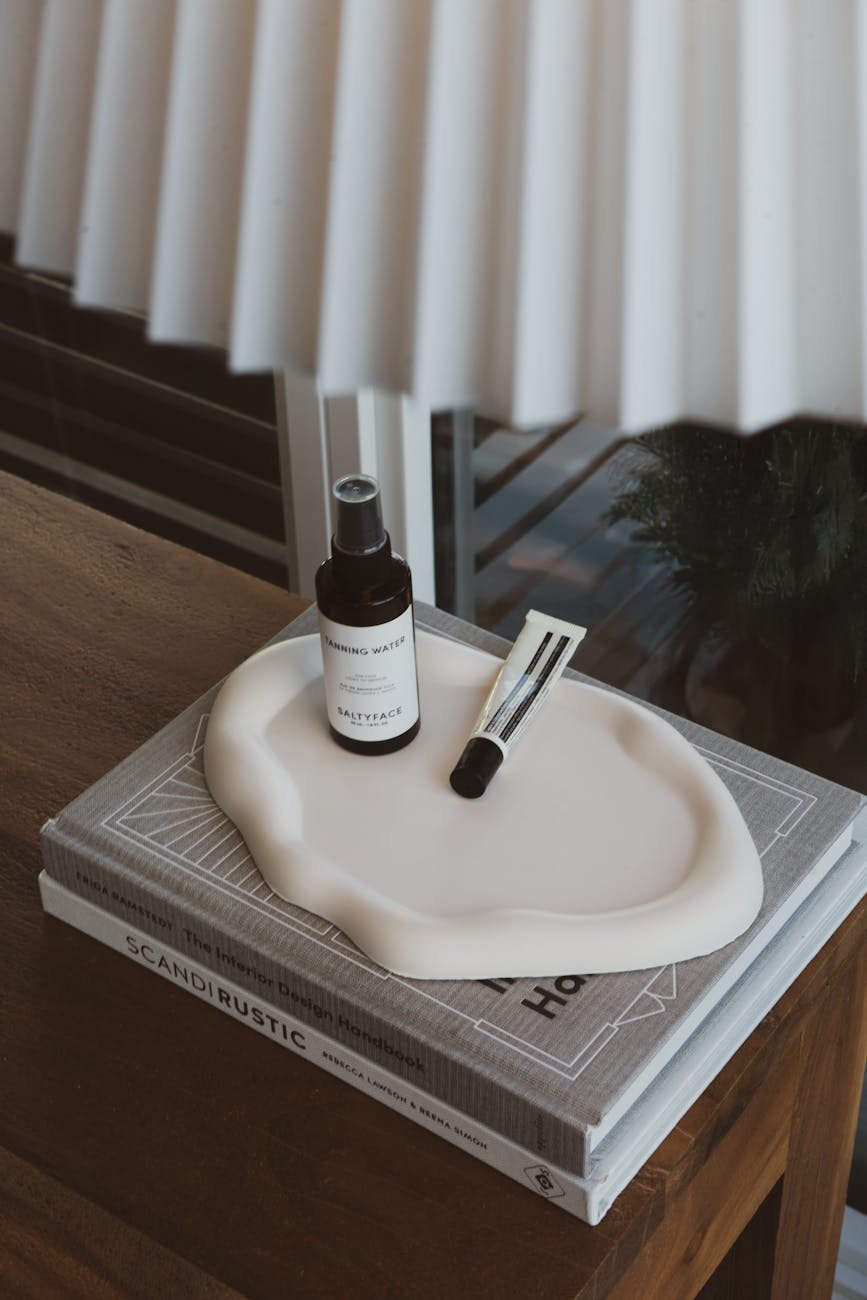The Future is Faster: Exploring Lamborghini’s Visionary F1 Concept
Carbon Fiber Dreams and Racing Realities: A Deep Dive into a Bold Motorsport Reimagining
The world of Formula 1 is a constant crucible of innovation, pushing the boundaries of engineering, design, and sheer speed. While the official grid represents the pinnacle of current automotive performance, the realm of concept design often offers a tantalizing glimpse into what could be. Recently, the spotlight has fallen on a particularly striking vision from designer William Almkvist: the Lamborghini F1 Concept. This design, as highlighted by TrendHunter.com, doesn’t just propose a new F1 car; it reimagines motorsport identity by artfully fusing raw carbon fiber realism with aggressive racing aesthetics, offering a fresh perspective on the iconic Italian marque’s potential future in the sport.
This article will delve into the genesis of this concept, explore its design philosophy, analyze its potential implications, and consider its place within the broader landscape of automotive and motorsport design. We will unpack the elements that make this concept so compelling and examine what it might signal for the future of Formula 1 and Lamborghini’s aspirations within it.
Context & Background
Before dissecting the Lamborghini F1 Concept itself, it’s crucial to understand the context in which it emerges. Formula 1, while a sport driven by historical prestige and established teams, is also a constant battleground for technological advancement. The sport has undergone significant regulatory shifts over the years, aiming to improve racing, enhance safety, and increasingly, to promote sustainability. These changes often influence the aesthetic and aerodynamic philosophies of the cars themselves.
Lamborghini, a brand synonymous with flamboyant design, extreme performance, and a lineage of uncompromising supercars, has a complex and somewhat intermittent relationship with Formula 1. While Lamborghini has participated in Formula 1 as an engine supplier in the past, most notably with Larrousse and Lotus in the early 1990s, they have never fielded a full factory team as a constructor. This history adds an intriguing layer to any concept that envisions their direct involvement in the sport’s premier category.
William Almkvist’s design is not an officially sanctioned Lamborghini project, but rather a personal exploration of how the brand’s DNA could translate into the demanding world of F1. This distinction is important; it allows for a greater degree of creative freedom, unburdened by the immediate constraints of technical regulations or corporate marketing strategies. However, the success of such a concept lies in its ability to resonate with the inherent identity of the brand it seeks to represent and the sport it aims to inhabit.
The trend of conceptualizing F1 cars, particularly by independent designers, is a well-established practice. These concepts often serve as benchmarks for aesthetic direction, thought experiments on aerodynamic principles, or simply as expressions of passion for the sport. They can influence public perception, inspire future design directions within teams, and even spark discussions about potential new entrants. In this vein, Almkvist’s work fits into a lineage of visionary designs that push the boundaries of what an F1 car can look like.
The summary provided by TrendHunter.com accurately captures the core of the design: “The Lamborghini F1 concept fuses carbon realism with racing aesthetics in a bold reimagining of motorsport identity.” This fusion is key. “Carbon realism” suggests an honest and unvarnished portrayal of the material that forms the very backbone of modern F1 cars, while “racing aesthetics” points to the aggressive, aerodynamic, and visually dynamic elements that define the sport’s visual language.
Understanding this background – Lamborghini’s history, the nature of F1, and the role of independent concept design – provides the necessary framework to appreciate the nuances and potential impact of Almkvist’s creation.
In-Depth Analysis
The Lamborghini F1 Concept, as presented, is a masterclass in blending distinct design philosophies. At its heart lies the deliberate choice to showcase exposed carbon fiber. In contemporary Formula 1, carbon fiber is not merely a structural material; it is the essence of performance, lightness, and technological sophistication. However, the visual treatment of carbon fiber can vary. Some teams opt for a fully painted livery, obscuring the weave, while others embrace a more ‘raw’ aesthetic, allowing the intricate pattern of the carbon weave to be visible.
Almkvist’s concept leans heavily into this latter approach, presenting what could be described as “carbon realism.” This suggests a design that doesn’t shy away from the material’s inherent beauty and complexity. The exposed carbon fiber, likely treated with a clear coat, would offer a tactile and visually rich surface. This approach can evoke a sense of high-tech precision and a direct connection to the advanced manufacturing processes involved in F1 car construction. It’s a statement of confidence in the material itself, a departure from the more conventional, often vibrant, liveries that tend to dominate the F1 landscape.
Complementing this “carbon realism” are the “racing aesthetics.” This refers to the dynamic lines, aggressive aerodynamics, and purposeful form that define a Formula 1 car. The concept likely incorporates elements that are both functional and visually striking, drawing inspiration from Lamborghini’s own design language. One might expect sharp creases, dramatic curves, and a low-slung, predatory stance. The livery, beyond the exposed carbon, would likely feature accents that echo Lamborghini’s signature colors or design motifs, creating a cohesive and unmistakably Italian identity.
The “fusing” of these two elements is where the true innovation lies. It’s not just about painting a carbon fiber car in Lamborghini colors, or simply showcasing the carbon weave on a generic F1 chassis. It’s about integrating the raw materiality of carbon fiber with the sculpted dynamism of racing design in a way that feels authentic to both. This could manifest in several ways:
- Strategic Exposure: Not all of the car might be exposed carbon. Certain panels, perhaps the front wing, rear wing, or specific aerodynamic surfaces, could be treated with a bold livery, creating a visual contrast with the raw carbon elements. This selective exposure can highlight key aerodynamic components or brand identifiers.
- Integrated Livery: The livery itself might be designed to work *with* the carbon fiber weave, rather than against it. Imagine graphic elements that follow the contours of the weave, or colors that are chosen to complement the natural tones of the carbon. This suggests a sophisticated understanding of how color and material interact visually.
- Aerodynamic Interpretation: Lamborghini’s road-going supercars are known for their dramatic aerodynamic features, often inspired by fighter jets. The F1 concept would likely translate this into aggressive wings, complex bargeboards, and a meticulously sculpted body, all while respecting the underlying “carbon realism.”
- Brand Identity Reinforcement: The concept would undoubtedly aim to embody the spirit of Lamborghini – aggressive, uncompromising, and visually arresting. This would be achieved through the overall silhouette, the detailing of components, and the subtle incorporation of brand signatures like hexagonal motifs or distinctive headlight designs, adapted for the F1 context.
The reference to “reimagining of motorsport identity” is particularly telling. Formula 1, while steeped in tradition, is also a global spectacle that must continuously evolve to remain relevant. The visual identity of the cars is a significant part of this. A concept that embraces the material truth of carbon fiber while pushing the aesthetic boundaries could signal a desire for a more honest, perhaps even more “grown-up” or technologically focused visual identity for the sport.
Furthermore, the idea of Lamborghini, a brand that has historically shied away from direct F1 competition, designing such a potent concept is noteworthy. It suggests an awareness of the sport’s appeal and a potential desire to explore how their brand values could translate into this highly specialized arena. The concept isn’t just about a car; it’s about a statement of intent, a hypothetical entry that carries the weight of Lamborghini’s formidable reputation.
The detailed analysis of the concept would naturally involve examining specific design elements: the shape of the front and rear wings, the complexity of the sidepods, the integration of the halo, the design of the wheels and tires, and the overall aerodynamic package. While the summary doesn’t provide these granular details, the core premise of “carbon realism” fused with “racing aesthetics” provides a strong foundation for understanding its intended impact.
Pros and Cons
Like any ambitious design concept, the Lamborghini F1 Concept presents a set of potential advantages and disadvantages when considered within the broader context of Formula 1.
Pros:
- Distinctive Aesthetic Appeal: The fusion of exposed carbon fiber with bold racing aesthetics offers a visually arresting and unique look. This can help Lamborghini, or any team adopting such a design, stand out in a field where many cars can appear visually similar due to aerodynamic regulations. The raw materiality of carbon fiber has an inherent appeal to enthusiasts who appreciate the engineering behind the sport.
- Embodiment of Modern Engineering: By highlighting the carbon fiber construction, the concept directly communicates the advanced materials and cutting-edge technology that underpin Formula 1. This can resonate with audiences who are drawn to the sport’s technical prowess.
- Reinforcement of Lamborghini’s Brand Identity: The design aims to translate Lamborghini’s core values of aggression, luxury, and performance into the F1 arena. If executed effectively, it could create a highly recognizable and desirable F1 car that carries the unmistakable “Lamborghini DNA.”
- Potential for Future Design Trends: Concepts like this can influence actual F1 car designs. The increased emphasis on exposed carbon fiber and innovative livery treatments could become a trend, pushing the sport’s visual evolution.
- Ignites Brand Enthusiasm: Even as a concept, it generates excitement and conversation around Lamborghini and its potential involvement in Formula 1. This can foster stronger brand loyalty and attract new fans to both the brand and the sport.
- Raw, Honest Representation: The “carbon realism” aspect can be seen as a move towards a more honest representation of what an F1 car is made of, showcasing the actual materials rather than masking them entirely with paint.
Cons:
- Practicality and Durability Concerns (Potentially): While modern carbon fiber is incredibly strong, exposing it entirely without traditional paint or protective coatings might raise questions about long-term durability, resistance to minor scuffs, and the visibility of imperfections over a race season. However, this is speculative without knowing the specific material treatments.
- Potential for Over-Stylization: The fusion of “racing aesthetics” could, if not carefully managed, lead to an over-stylized car that prioritizes visual impact over pure aerodynamic efficiency. Formula 1 is a sport where every millimeter of design is dictated by performance.
- Cost of Implementation: While carbon fiber is standard, achieving a perfectly finished, consistently visible carbon weave across all components of an F1 car could be more labor-intensive and costly than traditional painting, depending on the specific manufacturing processes.
- Risk of Alienating Traditionalists: Some purists in Formula 1 might prefer the more traditional, colorful liveries that have long been a part of the sport’s visual heritage. A radical departure could be met with resistance from certain segments of the fanbase.
- Commercial Viability for Sponsors: Sponsors often seek prominent placement for their logos. A design that heavily features exposed carbon fiber might require creative solutions to ensure sponsor visibility and impact, potentially altering the intended “carbon realism.”
- Limited Official F1 Context: As a concept, it is not bound by current F1 technical regulations. Translating such a design into a compliant car would involve significant engineering challenges and compromises.
These pros and cons highlight the delicate balance designers and teams must strike between artistic vision, brand identity, and the stringent demands of Formula 1 engineering and regulations.
Key Takeaways
- The Lamborghini F1 Concept, designed by William Almkvist, is a bold reimagining of motorsport identity by fusing exposed carbon fiber realism with aggressive racing aesthetics.
- The design emphasizes the advanced materials and engineering of Formula 1 by showcasing the raw beauty of carbon fiber.
- It aims to integrate Lamborghini’s signature design language and brand ethos into the high-performance world of F1.
- The concept offers a distinctive visual identity that could potentially influence future F1 car designs.
- Key advantages include aesthetic appeal, reinforcement of brand identity, and a modern, technologically focused presentation.
- Potential challenges lie in the practicalities of exposed materials, the risk of over-stylization, and integration with strict F1 regulations and commercial sponsor needs.
- While not an official Lamborghini project, it serves as an exciting thought experiment about the marque’s potential future in motorsport.
Future Outlook
The future outlook for concepts like the Lamborghini F1 Concept is multi-faceted. Firstly, as a design exercise, it contributes to the ongoing conversation about automotive aesthetics and the evolution of motorsport visuals. It’s a testament to the creative spirit that exists within the automotive design community, pushing boundaries and offering fresh perspectives on familiar themes.
From a brand perspective, such a concept can serve as a powerful marketing tool, even if it never translates into a physical car. It keeps the brand visible in the Formula 1 conversation, suggesting potential future aspirations or simply showcasing the brand’s design capabilities. For Lamborghini, who have a historical but not current direct presence in F1, this concept might be a way of signaling interest or exploring how their potent brand image could manifest in motorsport’s top tier.
In terms of actual F1 design, the trend towards exposing more carbon fiber is already evident. Many teams utilize a combination of painted sections and visible carbon weave to create visually interesting liveries. This concept could accelerate that trend, encouraging a bolder embrace of the material’s natural appearance. Furthermore, the integration of brand-specific design cues, like the sharp lines and aggressive stance often associated with Lamborghini, is something that teams continually strive to achieve within the aerodynamic constraints of F1. This concept shows one potential way to achieve that fusion.
However, the direct impact on future F1 car design is contingent on several factors. The prevailing aerodynamic regulations are paramount. Any design must function within these strict rules. The concept’s ability to translate into a functional, competitive F1 car would require significant engineering input from aerodynamicists and chassis designers. The balance between aesthetic goals and performance requirements is the eternal challenge in F1 design.
The long-term viability of exposed carbon fiber in F1, especially for primary bodywork, might also depend on future regulations concerning sustainability and material use. As the sport increasingly focuses on eco-friendly practices, the lifecycle and recyclability of materials will become even more critical.
Ultimately, concepts like this serve as provocateurs. They challenge the status quo and inspire future thinking. Whether or not a Lamborghini F1 car with this specific aesthetic ever graces the grid, the ideas explored in this concept will likely ripple through the world of automotive and motorsport design, fostering innovation and reminding us of the boundless potential of creativity when fused with performance.
Call to Action
The Lamborghini F1 Concept presented by William Almkvist is a compelling vision that sparks imagination about the future of motorsport design. It represents a sophisticated blend of raw engineering honesty and aggressive performance aesthetics, perfectly capturing the spirit of the Lamborghini brand.
We encourage you to explore the design further and consider its implications. What do you think of this direction for Formula 1 car aesthetics? Does the fusion of exposed carbon fiber and racing dynamics appeal to you?
Share your thoughts and engage in the conversation! Discuss this concept with fellow motorsport enthusiasts, designers, and automotive fans. Your perspective contributes to the ongoing dialogue surrounding innovation in the world of speed and design.
To learn more about the concept and see more of William Almkvist’s work, we recommend visiting design portfolios and automotive enthusiast websites that feature this innovative project. While official Lamborghini statements on this specific concept are unlikely, exploring the broader context of Lamborghini’s motorsport aspirations can provide further insight.
Consider how this concept might influence the way we perceive F1 cars and the role of design in the sport. The future of racing is being imagined right now, and this concept is a vibrant part of that ongoing creative process.









